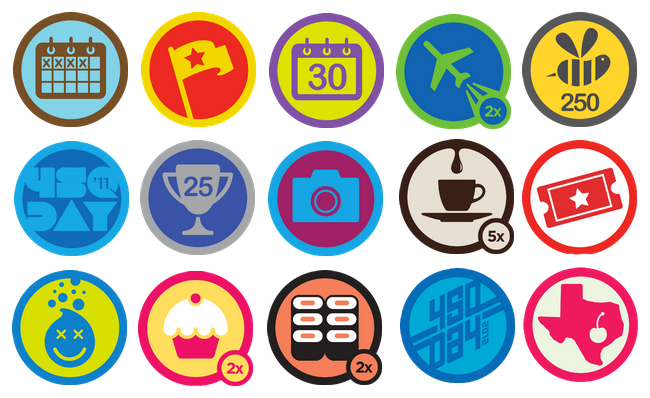Badges increase user activity – A field experiment on the effects of gamification

Image Source:http://www.howdesign.com/resources-education/gamifying-your-website/
During recent years, the boundary between games and other systems and services has become increasingly blurred. This development can be seen to be bi-directional: On one hand, within games, users are increasingly subjected to decision making situations pertaining to outside-game concerns (especially with the rise of Free-to-play games about how people use money). On the other hand, in non-game contexts, game design is increasingly used to direct people’s motivations towards intrinsically motivated, gameful experiences and behavior. This phenomenon is commonly referred to as gamification. Gamification has already been applied in several areas, including the promotion of greener energy consumption (Nissan Leaf), building loyalty towards TV channels(GetGlue), taking care of one’s health (Fitocracy), and even for gamifying the tracking of one’s aspirations in life (Mindbloom).
Thus, the practice of adding game design to non-game services has gained a relatively large amount of attention. Popular discussion connects gamification to increased user engagement, service profitability, goal commitment and the overall betterment of various behavioral outcomes. However, there is still an absence of a coherent and ample body of empirical evidence that would confirm such expectations.
To this end, in this paper, we studied the effects of gamification (a badge system) on user activity in a sharing economy service (a peer-to- peer marketplace). In our experiment, people could unlock badges by completing common actions and tasks within the service. The experiment focused on investigating whether the implementation of badges positively affects usage activity. Since the experiment was carried out in a peer-to-peer marketplace, usage activity was measured via four related dependent variables: the amount of posted trade proposals, accepted transactions, posted comments, and general usage activity as measured via page views. The field experiment spanned 2 years (1 þ 1 year e between-group). During the experiment a pre-implementation group (N 1⁄4 1410) was monitored for 1 year. After the implementation, the post-implementation (the gamified condition) group (N1⁄41579) was monitored for another full year. Results show that users in the gamified condition were significantly more likely to post trade proposals, carry out transactions, comment on proposals and generally use the service in a more active way.
Please see the paper for full details:
Journal: http://dx.doi.org/10.1016/j.chb.2015.03.036
Citation: Hamari, J. (2017). Do badges increase user activity? A field experiment on the effects of gamification. Computers in Human Behavior, 71, 469-478. doi:10.1016/j.chb.2015.03.036
Authors
Juho Hamari
Gamification Group, Tampere University of Technology, Finland
Gamification Group, University of Turku, Finland
Gamification Group, University of Tampere, Finland
@VirtualEconomy




Sorry, the comment form is closed at this time.